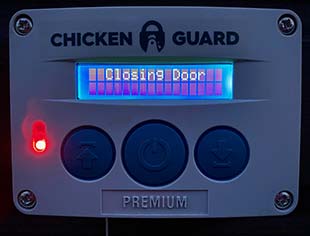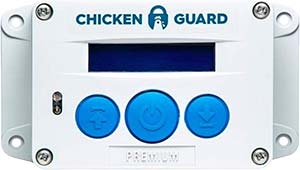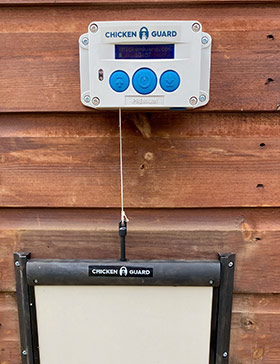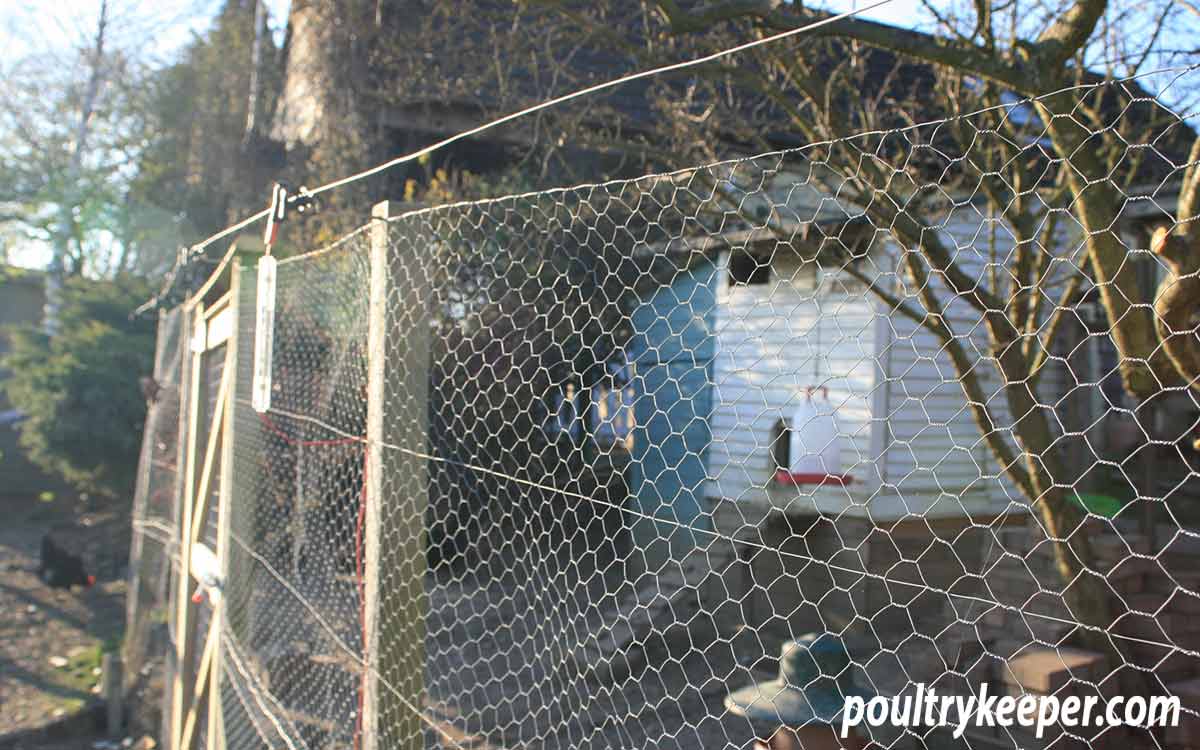
In this article, Jeremy Hobson looks at ways of giving your chickens space yet still keeping them free from danger by using well-designed chicken runs or pens.
Some of the heavier breeds of chickens have, over the years, developed in such a way that their wings are hardly capable of doing much more than flapping and lifting a bird a few inches off the ground when danger threatens. Others, usually the lighter Mediterranean varieties, can fly quite well… and certainly into the branches of a nearby tree if pursued by a domestic dog or foraging fox. Many years ago, all types of chicken were able to fly well enough to be able to roost in trees, an evolutionary factor that was obviously essential to their survival in the wild.
Choosing your enclosure
Logically, it should be easier and cheaper to build chicken runs or enclosures suitable for the heavier breeds such as Sussex or Wyandotte’s rather than one for Minorca’s or Ancona’s – and so it would if all one had to consider was their escaping.

However, in reality, an outside run in which birds will be allowed permanent access needs to be a safe and secure structure to prevent predators from getting in, rather than stopping your stock from getting out. In the UK, the number one predator for poultry keepers is nine times out of ten, the fox.
Chicken runs
Any chicken fencing I build always follows the pattern I used when employed as a gamekeeper and needed to construct large fox-proof pheasant release pens in the woodland areas of the estate.
To protect against foxes and even wandering dogs, the fencing surrounding permanent poultry houses should be around 2m (6½ ft) high, with at least 30cm (1ft) dug into the ground (or turned out and pegged) to prevent anything from scratching under.
Personally, I prefer to make the turn-out and first 0.6m (2ft) of the chicken run fencing from small-mesh wire netting as it adds strength and helps to protect further. The remainder of the height can be made up of larger (and consequently cheaper) sized mesh.
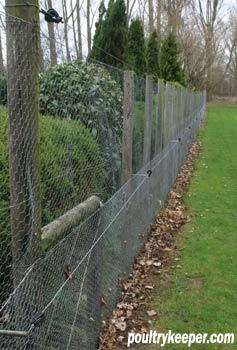
Ordinary galvanized chicken wire is perfect for the job, but make sure that it is of good quality – it will be more expensive than the cheap imports readily available, but it will last twice as long. Strain the tops and middle sections with a length of galvanized wire stapled to the posts (but do not hammer the staples right ‘home’, or they will pinch the wire and cause it to break) and leave the top of the wire netting protruding above the straining wire and slightly floppy so that it is more difficult for anything to climb in that way.
Use strong posts: angle-iron ones with holes drilled at appropriate heights to allow a length of straining wire to be threaded through work well and will last a long time. Still, most people tend to use wooden stakes, which can be obtained (pressure-treated with a preservative) either from your local agricultural suppliers or a nearby wood-yard.
Gates to chicken runs
When building gates to chicken runs, make sure that whatever method used to fasten it is a secure one. A central bolt often seems safe, but you must never forget that a determined fox or neighbour’s dog pushing and scratching at its base could force an entry. Don’t forget to make the gate wide enough to allow for the passage of wheelbarrows or any broody coops and runs that may be needed in the future.
A nylon net over a relatively small poultry run can be a useful addition and should be kept taut by being held up with stakes – but be sure to place an upturned plastic plant pot on the top of each; otherwise, the stake will eventually rub a hole in the mesh.
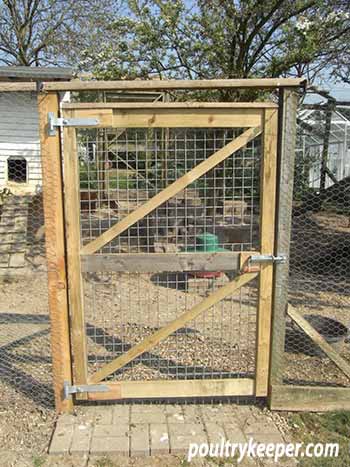
Electric poultry netting
Alternatively, if your chosen breeds are of a type that is unlikely to fly out at any and every opportunity, rather than go to the expense of a high (and unnecessarily expensive galvanized fence) around your runs, you could construct simple wire netting fences of only about 1m (3ft 3in) in height and then, to give additional protection, place a temporary fence of ‘Flexi-net’ or ‘electric poultry netting‘ some distance away. Basically, ‘Flexi-net’ is a nylon fence, constructed in squares (in much the same way as traditional galvanized stock fencing), through which strands of wire have been woven – and usually comes in 50-metre rolls. The fence is then connected to an electric fencing unit. A pulse current is passed through the fence, giving anything that touches it a similar shock to that which would be experienced if one were to come into contact with a single strand fence used to contain cattle.
Gamekeepers use a double strand of electric fencing around the base of their pheasant release pens to protect their birds from foxes, and this system may also be of value to the poultry keeper.
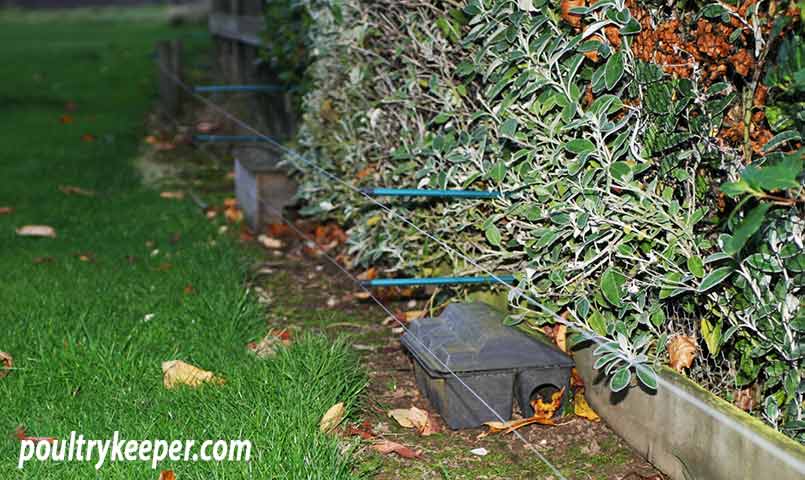
Wherever any electric fencing is being used on chicken runs, no grass or vegetation must be allowed to come into contact with the fence line; otherwise, it will cause a ‘short’ and make the fencing far less effective or even fail to work at all.
Whilst a strimmer might be a good way of ensuring that the grass under electric fencing is never allowed to grow long enough to short out the circuit, be very vigilant when using one: not just because of the obvious safety reasons, but also because the cord or blade may cause unseen damage to the wire netting itself. You might not notice it, but your chickens might – and a fox most certainly will.
And, whilst on the subject of foxes, it is also worth noting that even a high wire netting enclosure such as I have described earlier cannot be guaranteed to be totally fox-proof.
They are marvellous climbers and will scramble into chicken runs via surrounding protrusions and nearby buildings. So, although the new pen might look like Fort Knox, it is perhaps as well to continue shutting your birds in their house each evening.
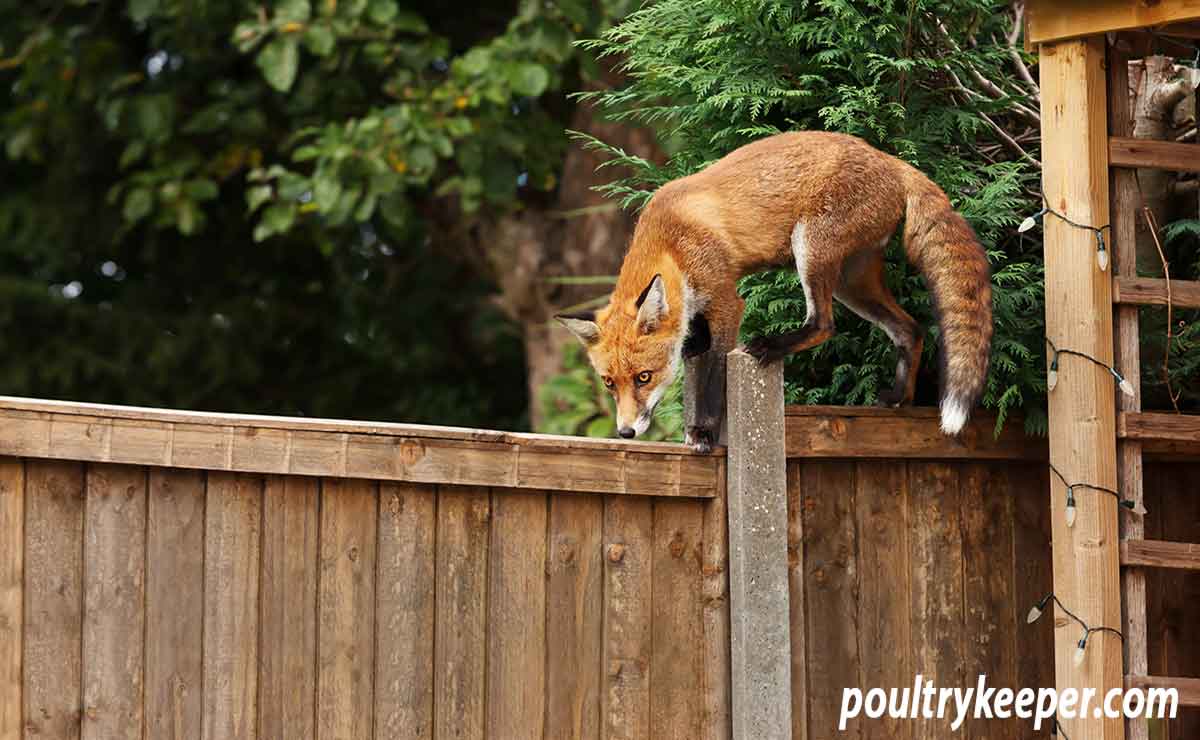
If you are not available every night as it gets dark, it is wise to have an automatic chicken door like the ChickenGuard. These marvellous inventions can save a lot of heartaches.
Automatic
Door Opener
& Closer
The most likely time for predators like foxes to visit is at night, so your chickens must be locked up safely from dusk until dawn.
If you are worried about being at home in time to lock up your chickens, then the ChickenGuard automatic chicken door might be the answer?
